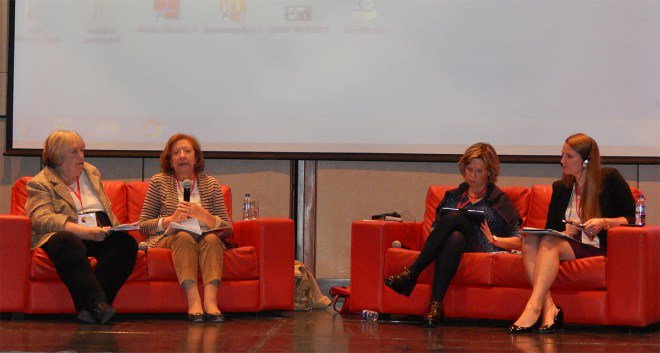Educational Model Co-Created by Prof. Beryl Levinger Now a Global Movement
Just a few months after Middlebury Institute professor Beryl Levinger married her husband Sam, the young newlyweds moved to a remote part of Colombia to begin their two years as Peace Corps Volunteers. The year was 1967 and the place was Tibú in Norte de Santander, in Northeastern Colombia, very close to the border with Venezuela. “It was truly a challenging place to live,” shares Levinger and goes on to describe the area as a former jungle that had been cut down and then abandoned by oil developers. They lived in a house with no running water, no electricity and what she calls a “rat highway.” But true to the Peace Corps slogan, it was the “toughest job they ever loved.”
At the time, Peace Corps Volunteers were not assigned jobs; as Levinger puts it, “they just said ‘You’re going to do rural development’ and you had to figure out yourself what to do.” Passionate about education, Levinger says as a 20-year-old she really had not done much other than go to school and so that was what she decided to focus on. Most schools in the area had just one teacher, most often a woman whose formal education ended at the 8th grade. The schools were also “incomplete,” meaning that they generally only offered the first three grades of the five-year primary program. But what was most alarming to Levinger was the fact that teaching meant copying a book onto the blackboard and then having the children copy that text into their notebooks. “There was not a lot of learning going on.”
Levinger visited Oscar Mogollón, a man she kept hearing about, who was teaching in an experimental school. His work was focused on creating a pedagogy to meet the needs of students in rural, one-teacher settings. Pamplona, where Mogollón worked, was six hours and a world away from where Levinger lived.. But it was there that she found what she was looking for. “He was charming, amazing, dedicated and offered exemplary education.” Levinger went back and, with great success, adapted for ten schools some of the methods Mogollón had pioneered. For the remainder of her Peace Corps time, she met weekly with these rural teachers and saw them and their students grow to become accomplished, self-motivated learners.
After leaving the Peace Corps, the Levingers stayed in Latin America. They lived in Honduras for a few years, where their two daughters were born. But four years later they moved back to Colombia where Beryl Levinger had a position with USAID. “Interestingly, I was asked to work on a project to help teachers in one-teacher schools and my bosses suggested I work with Mogollón.” They had no idea about her past connection to him as a Peace Corps Volunteer. “To understand the magnitude of that coincidence, you have to understand what a large place Colombia is.”
Levinger went on to work with Mogollón, and a Colombian-American woman named Vicky Colbert. Together, the threesome created the educational model known as Escuela Nueva, or New School. Building on Mogollón’s classroom work, Levinger’s experience in bringing this model to scale in profoundly remote settings, and Colbert’s sociological insights about community engagement, they created a system, initially published as a how-to manual, to promote active learning in small schools with few resources. Their materials provided a structured learning process that focused on high order thinking skills and the practical application of all curricular content. The children would work as individuals and in groups. Teachers became facilitators of learning. Another important part of Escuela Nueva was the mobilization of the community, making the school a part of, and not separate from, the community.

This fall Levinger attend the third International Congress for Escuela Nueva schools in Bogotá. The pedagogy she co-created has become, thanks in large part to Vicky Colbert’s dedication, a global movement and is used with great success in over 40 countries. It has been studied by education scholars from many different countries. “It was pretty mind-blowing to meet people from all over the world who are using our methodology and were asking for my autograph,” she says.
Levinger went on to use the work they had developed for Escuela Nueva as the basis for her dissertation. “We created a pedagogy, but it was Vicky who became a vocal advocate for this methodology and transformed it into a worldwide movement.”
Levinger is the program chair for the two degree programs that fall under Development, Practice and Policy—the International Policy and Development and Public Administration degrees. “Big elements of the Escuela Nueva pedagogy are still a part of my teaching today here at the Middlebury Institute.” Levinger will once again be returning to Colombia in the spring semester, when as a Fulbright Scholar, she will develop and then pilot an assessment tool to help police working in the former conflict zones assess the extent to which their practices contribute to democratization. Part of this assignment will be carried out in the area where she once served in the Peace Corps.
For More Information
Jason Warburg
jwarburg@middlebury.edu
831.647.3156
Eva Gudbergsdottir
eva@middlebury.edu
831.647.6606
